Korean stews hold a special place in the hearts and palates of locals and food enthusiasts alike. These hearty and soul-warming stews, known as “jjigae,” have been cherished for generations, serving as a comfort food that brings people together in shared moments of warmth and joy. Korean stews, or jjigae, are the heart and soul of Korean cuisine, bringing warmth and comfort to the dining table. Each stew tells a unique story, enriched by a medley of flavors and ingredients that cater to diverse tastes. Let’s delve into the tantalizing world of popular Korean stews: Kimchi-jjigae, Doenjang-jjigae, and Sundubu-jjigae, Budae-jjigae, Cheonggukjang
The Essence of Korean Stews
Korean stews are much more than just a dish; they are an expression of the country’s culture, history, and culinary artistry. At the heart of every jjigae is a harmonious blend of ingredients, carefully selected and combined to create a delightful balance of flavors. Whether it’s the spicy kick of kimchi, the umami goodness of soybean paste, or the savory depth of soy sauce, each jjigae showcases the essence of its key ingredients.
Kimchi-jjigae: Spicy and Satisfying
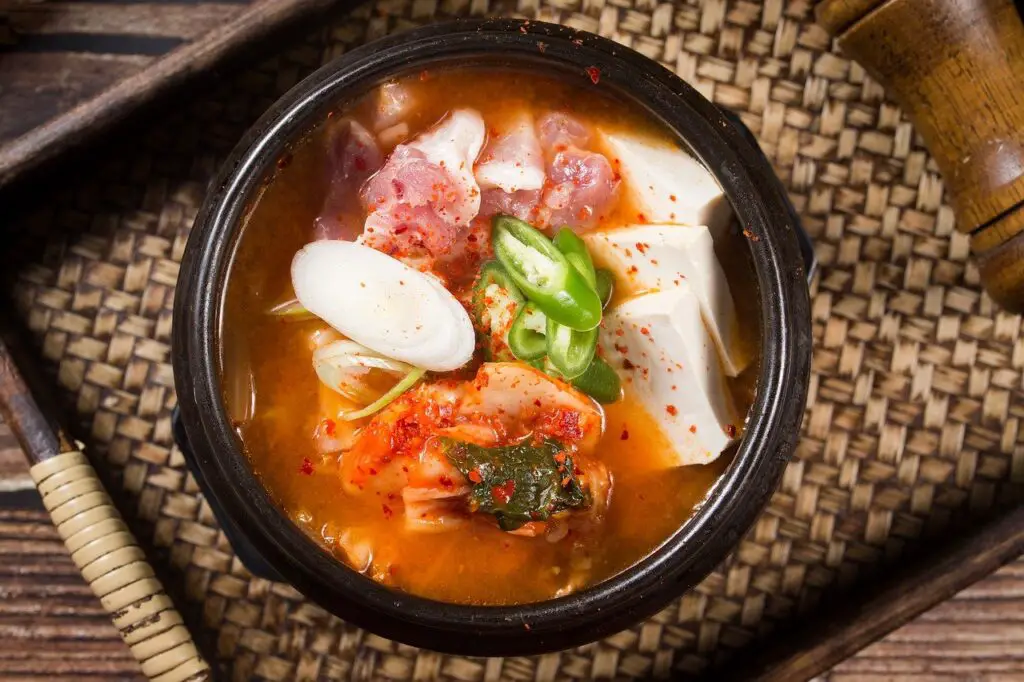
Kimchi-jjigae, the crown jewel of Korean stews, embodies the fiery essence of Korea’s beloved kimchi. Prepared with aged, fermented kimchi, this stew takes on a bold and complex flavor profile that will leave taste buds dancing with delight. Typically cooked with pork, tofu, sliced spring onions, and garlic, kimchi-jjigae showcases the best of Korean cuisine.
The secret to its depth lies in the anchovy or myeolchi stock, which elevates the taste to a whole new level. Seasoned with the choice of fermented bean paste (doenjang) or spicy red pepper paste (gochujang), this stew boasts a symphony of flavors that beckon you to take another spoonful.
Doenjang-jjigae: The Essence of Korean Tradition
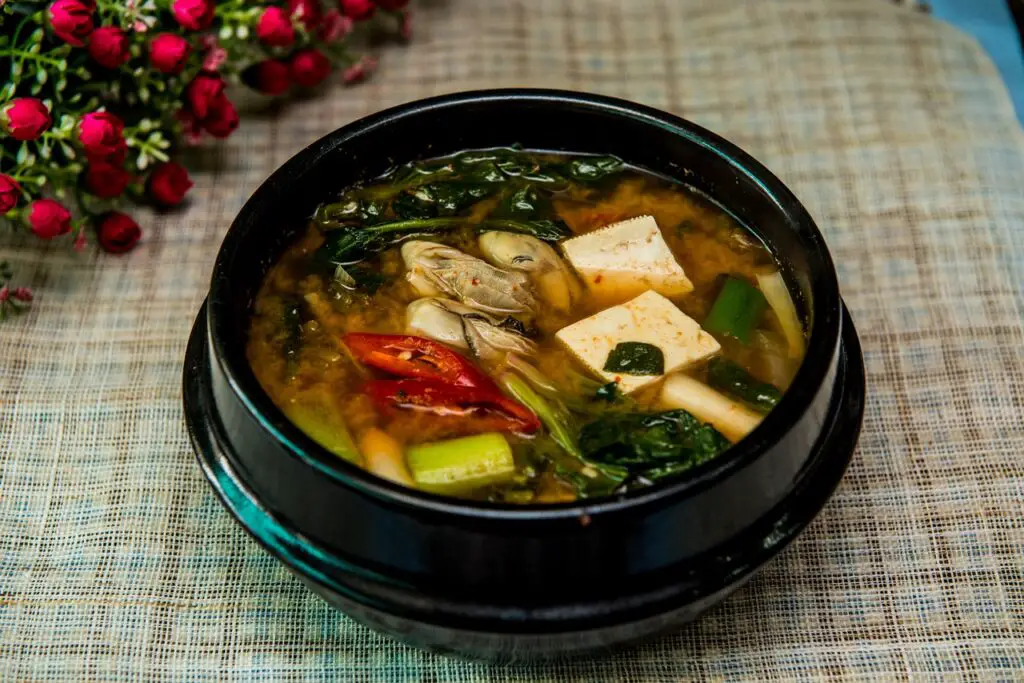
Doenjang-jjigae, or soybean paste stew, holds a special place in the hearts of Koreans. Prepared with the core ingredient of doenjang, a rich and savory soybean paste, this stew brings a warm familiarity to the dining table. With an array of vegetables, seafood, and meat, each pot of doenjang-jjigae tells a unique story of the family or restaurant that prepares it.
The base broth, infused with dried anchovies and white radish, forms the foundation for the stew’s depth. As ingredients are added, the flavors harmonize to create a comforting and nourishing experience. Served as a sharing dish, doenjang-jjigae epitomizes the essence of Korean hospitality and camaraderie.
Sundubu-jjigae: Silken Tofu Sensation
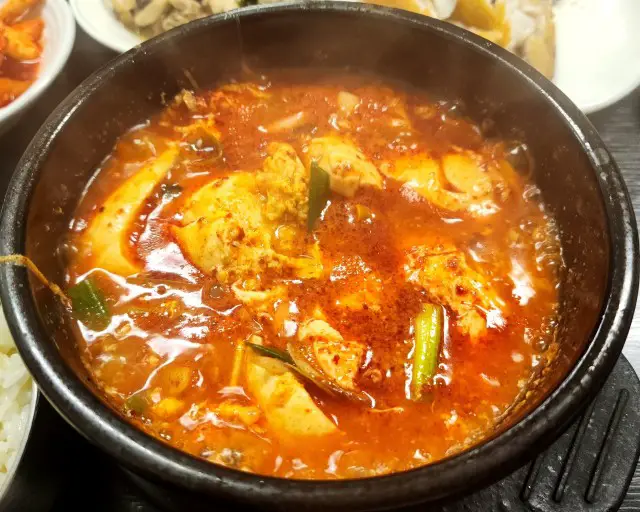
For lovers of tofu, Sundubu-jjigae is a heavenly delight. Featuring freshly curdled soft tofu, this stew is a testament to the simplicity and beauty of Korean cuisine. The unstrained tofu, known as sundubu, adds a delicate creaminess to the dish, creating a velvety texture that pleases the palate.
Along with vegetables and optional seafood or meat, Sundubu-jjigae is infused with the bold flavors of gochujang or gochugaru, delivering a mild spice that perfectly complements the softness of the tofu. Served directly in a thick porcelain vessel, this stew is a spectacle to behold, arriving at the table with bubbling vigor.
Budae-jjigae: The Heart of Resilience and Fusion
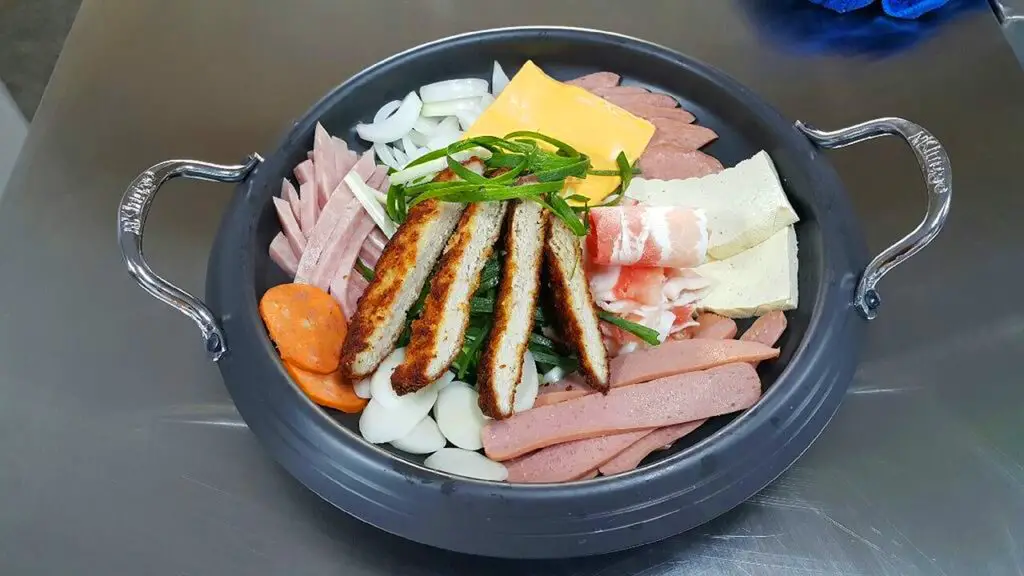
Budae-jjigae, also known as “army base stew,” is a spicy and savory Korean jjigae that reflects a unique chapter in Korean history. The heart of budae-jjigae lies in its diverse ingredients, which create a delightful harmony of taste and texture. The soup base can vary from plain water to rich fish, meat, or bone-based broth like sagol-yuksu. Ham, sausage, Spam, kimchi, instant noodles, gochujang, and more combine to produce a flavor explosion that delights the senses. Emerging from the shadows of the Korean War, this comforting dish boasts a fascinating blend of ingredients, often incorporating canned or processed items. From ham and sausage to Spam and baked beans, budae-jjigae is a testament to resourcefulness and resilience.
Cheonggukjang: The Soulful Fermented Soybean Delicacy
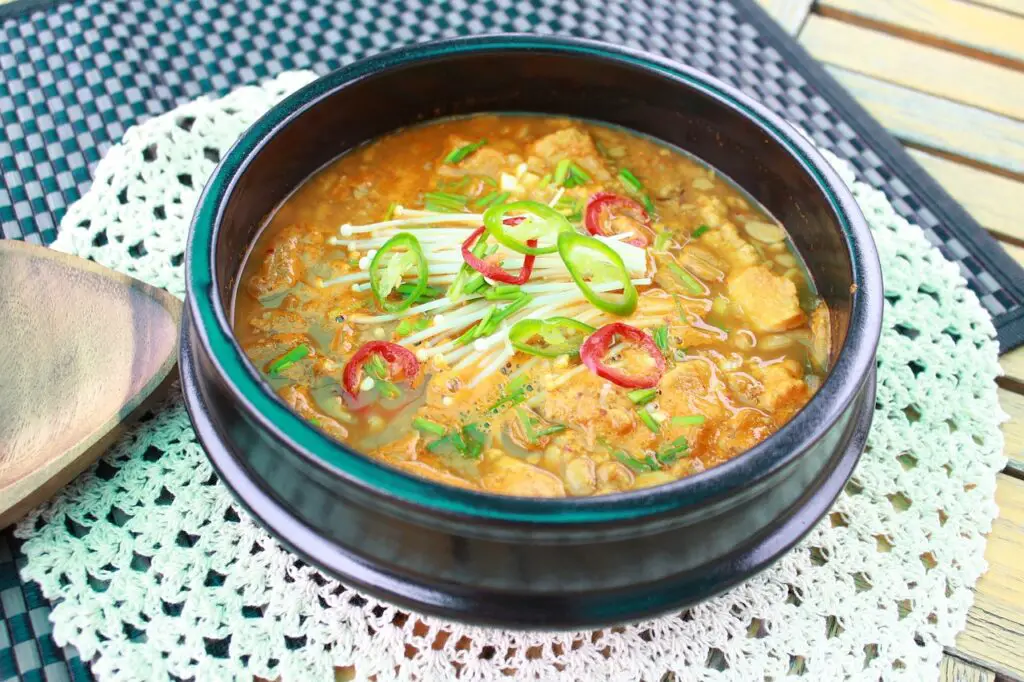
Cheonggukjang, an integral part of Korean culinary heritage, is a traditional fermented soybean food that carries with it the essence of time-honored traditions and rich flavors. The rich umami and tangy notes that dance on the palate are revered by those who appreciate the complexities of traditional fermented foods. This remarkable dish captures the heart of Korean cuisine, made by fermenting soybeans into a uniquely textured and flavorful paste.
Beyond the Table: A Taste of Korean Culture
Korean stews not only satiate hunger but also offer a glimpse into Korean culture and history. Sharing a pot of stew, whether Kimchi-jjigae, Doenjang-jjigae, or Sundubu-jjigae, is a cherished tradition that fosters togetherness and connection. As the stew simmers, so do the stories and laughter around the table.
Korean stews, with their unique flavors and heartwarming qualities, have earned a special place in the world of culinary delights. From the bold and spicy Kimchi-jjigae to the comforting and traditional Doenjang-jjigae, and the soft and silky Sundubu-jjigae, each stew weaves a tale of love, tradition, and shared moments. So, the next time you savor a bowl of Korean stew, remember that you are not just eating a meal; you are partaking in a timeless tradition and experiencing the warmth of Korean culture.
Picture source: pixabay, naver
